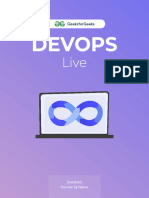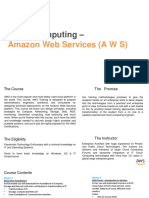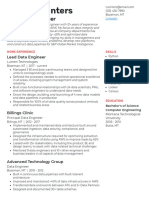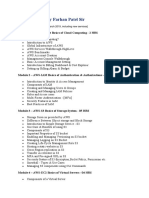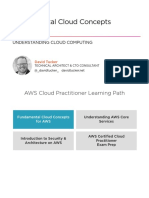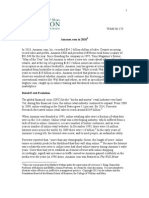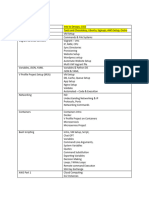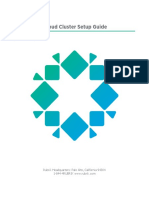0% found this document useful (0 votes)
57 views5 pagesAWS and DEVOPS Course Syllabus
The AWS and DevOps course syllabus covers four main modules: Introduction to Cloud Computing and AWS, AWS Core Services, AWS Storage and Advanced Architectures, and Introduction to DevOps, each lasting 12 hours over 3 days. Participants will learn about AWS services, DevOps principles, CI/CD practices, and hands-on labs to build real-world solutions. The course culminates in a capstone project where students design and deploy a multi-tier AWS architecture and implement CI/CD pipelines.
Uploaded by
Geetha GCopyright
© © All Rights Reserved
We take content rights seriously. If you suspect this is your content, claim it here.
Available Formats
Download as PDF, TXT or read online on Scribd
0% found this document useful (0 votes)
57 views5 pagesAWS and DEVOPS Course Syllabus
The AWS and DevOps course syllabus covers four main modules: Introduction to Cloud Computing and AWS, AWS Core Services, AWS Storage and Advanced Architectures, and Introduction to DevOps, each lasting 12 hours over 3 days. Participants will learn about AWS services, DevOps principles, CI/CD practices, and hands-on labs to build real-world solutions. The course culminates in a capstone project where students design and deploy a multi-tier AWS architecture and implement CI/CD pipelines.
Uploaded by
Geetha GCopyright
© © All Rights Reserved
We take content rights seriously. If you suspect this is your content, claim it here.
Available Formats
Download as PDF, TXT or read online on Scribd
/ 5
























